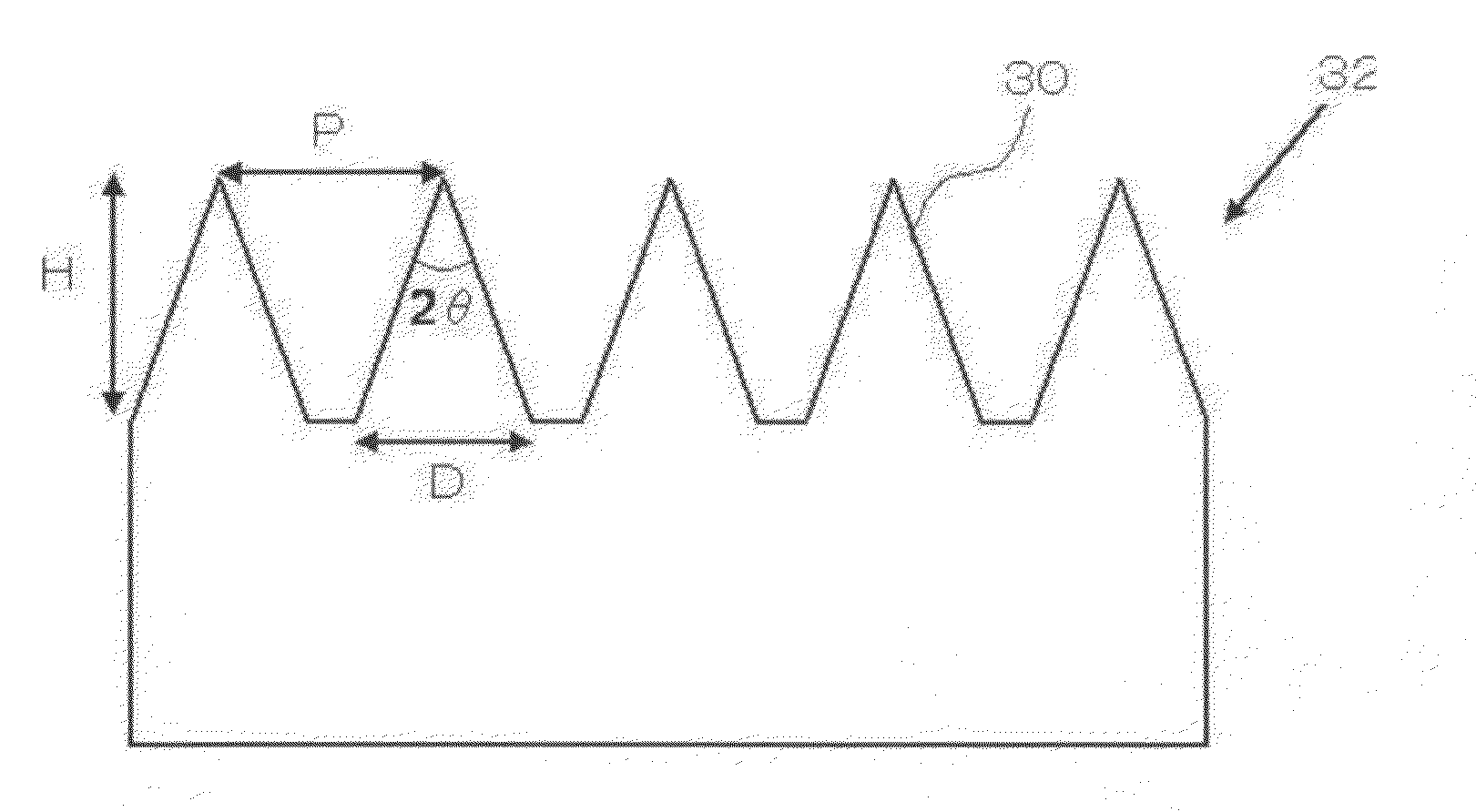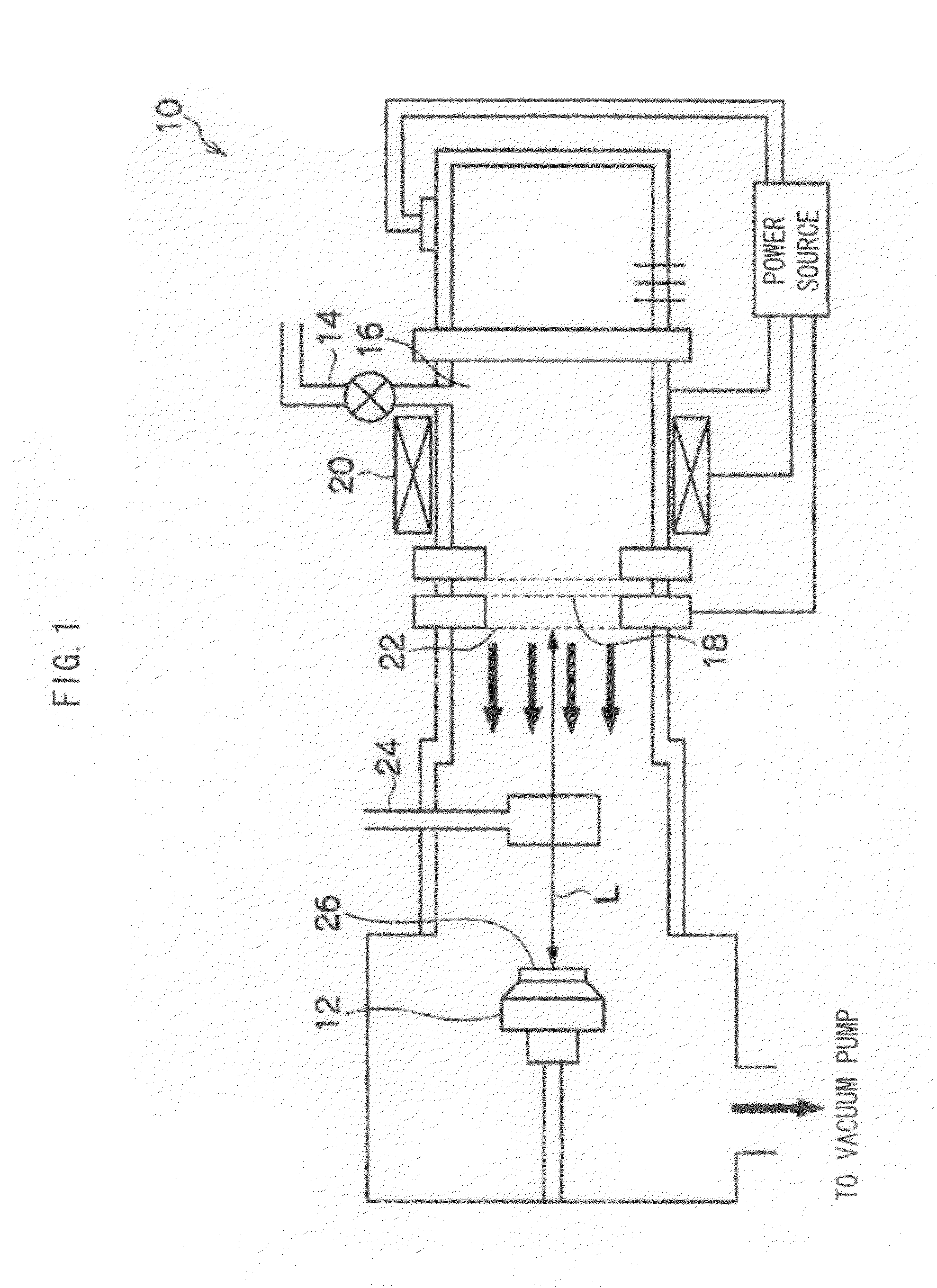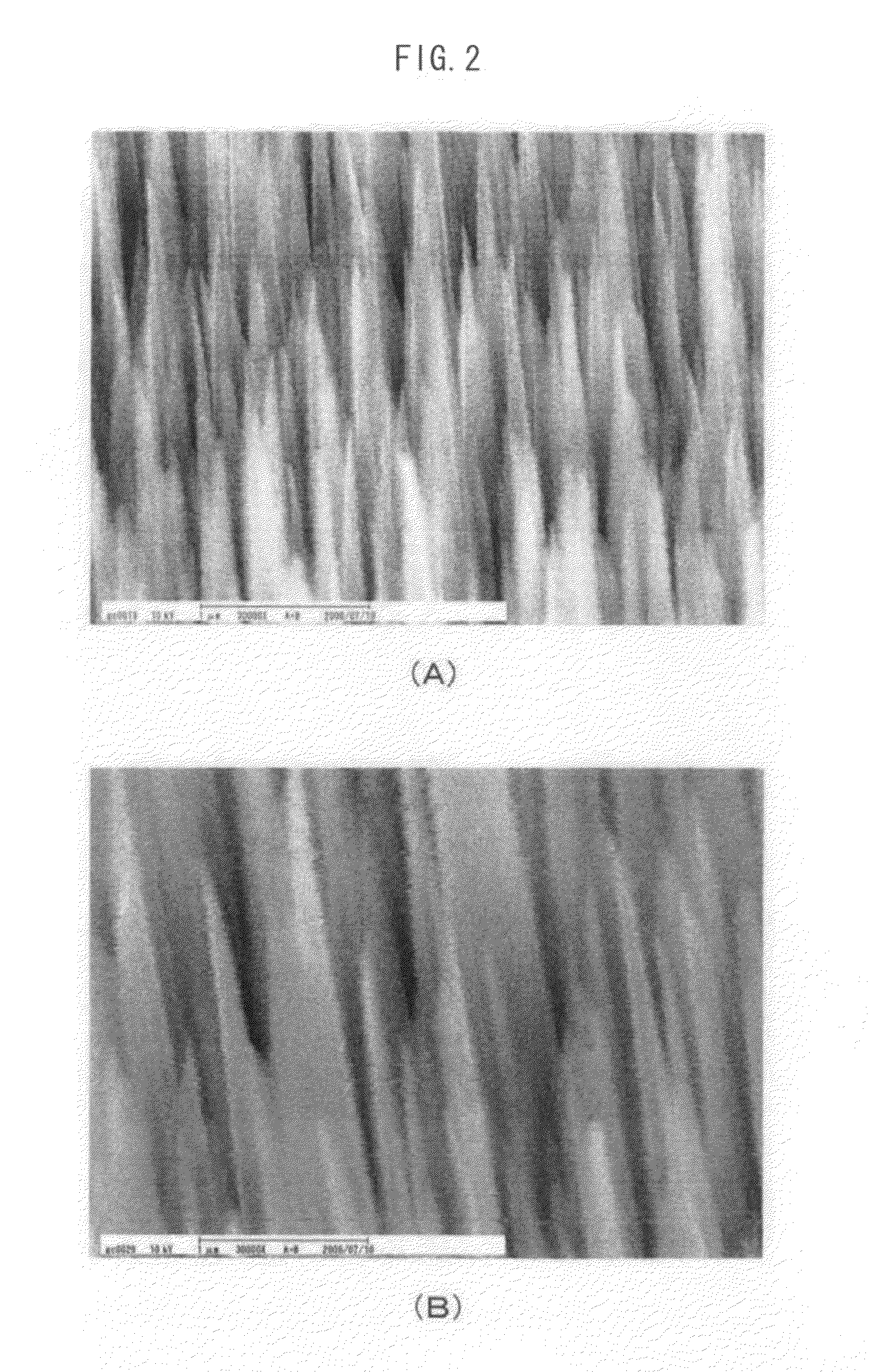Anti-Reflection Structure Body, Method Of Producing The Same And Method Of Producing Optical Member
a structure body and anti-reflection technology, applied in the direction of optical elements, identification means, instruments, etc., can solve the problems of complicated procedure, troublesome method, and posed exfoliation of coatings, and achieve the effect of easy production
- Summary
- Abstract
- Description
- Claims
- Application Information
AI Technical Summary
Benefits of technology
Problems solved by technology
Method used
Image
Examples
examples 2 through 12
[0094]The surface processing of the glassy carbon substrate is carried out by changing at least one of the acceleration voltage, the gas flow rate and the processing time from those of Example 1.
[0095]Processing conditions of Example 1 through Example 12 are summarized in Table 1.
TABLE 1gas flowcurrentexampleaccelerationrateprocessingdensityprocessingNo.voltage [V]extractor[SCCM]time [min][mA / cm2]depth [μm]1100002.0102.072.92100002.0601.9515.8375002.0101.803.1475002.0601.8019.5550002.051.200.73650002.0101.231.6750002.0301.205.1850002.0451.208.6950001.4601.2910.51050003.0600.969.711250102.0601.14—12100102.0601.20—
[0096]In Examples 11 and 12, the extractor 18 is used and scale 10 of the extractor 18 corresponds to 300 V. The current density is a measured value at a Faraday cup 24.
[0097]“Processing depth” in Table 1 is a depth of a recess portion formed at a surface of the substrate by irradiating an ion beam, and an anti-reflection structure formed of a cluster of projections of acicu...
example 1
Transfer Example 1
[0103]An anti-reflection structure is formed by processing one face of a glassy carbon (GC) substrate (length and width: 10×10 mm, thickness: 1 mm) by using ECR under the following condition.
[0104]Acceleration voltage: 500 [V]
[0105]Processing time: 30 [min]
[0106]Extractor: 0
[0107]Gas kind: oxygen
[0108]Gas flow rate: 3.0 [SCCM]
[0109]Ion emission: 13.1 [mA]
[0110]Rotation speed of holder: 0 [rpm]
[0111]Microwave output: 100 [W]
[0112]Current density: 1.67 [mA / cm2]
[0113]Distance (L) between beam extracting electrode and GC substrate: 11.7 cm
[0114]A face at which the anti-reflection structure is formed by the above-described processing is coated by a fluoro-resin coating agent (OPTOOL (registered trade mark), made by Daikin Industries Ltd., 0.1%) as a mold release agent, thereafter, spin-coated with a photo-curable resin (PAK-01, made by Toyo Gosei Co., Ltd.) thereon. The face coated with PAK-01 is pressed to a slide glass, and transfer is carried out by curing PAK-01 by ...
example 2
Transfer Example 2
[0122]Transfer is carried out by using SOG (Spin on Glass, made by Honeywell International Inc., Accuglass (registered trade mark) 512B). Similar to Transfer Example 1, SOG is spin-coated on a GC substrate in which the anti-reflection structure is formed by ECR, thereafter, the GC substrate is baked for 3 minutes, at 250° C.
[0123]Successively, PAK-01 is spin-coated on the baked SOG layer, thereafter, transfer is carried out by pressing a slide glass thereto and curing PAK-01 under the following condition.
[0124]Pressure: 1.07 [MPa]
[0125]Pressure maintaining time: 60 [s]
[0126]UV irradiant dose: 2 [J / cm2]
[0127]When the reflectance of SOG in which the anti-reflection structure is transferred as described above is measured, it is known that the reflectance similar to that in the transfer to PAK-01 resin is determined and the anti-reflection structure of the original mold is reflected.
[0128][Measurement of Absolute Reflectance]
[0129]A GC substrate (30 mm square) at one s...
PUM
| Property | Measurement | Unit |
|---|---|---|
| average height | aaaaa | aaaaa |
| diameter | aaaaa | aaaaa |
| angle | aaaaa | aaaaa |
Abstract
Description
Claims
Application Information
 Login to View More
Login to View More - R&D
- Intellectual Property
- Life Sciences
- Materials
- Tech Scout
- Unparalleled Data Quality
- Higher Quality Content
- 60% Fewer Hallucinations
Browse by: Latest US Patents, China's latest patents, Technical Efficacy Thesaurus, Application Domain, Technology Topic, Popular Technical Reports.
© 2025 PatSnap. All rights reserved.Legal|Privacy policy|Modern Slavery Act Transparency Statement|Sitemap|About US| Contact US: help@patsnap.com



